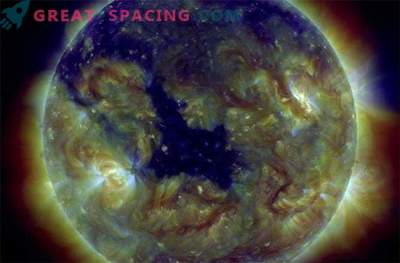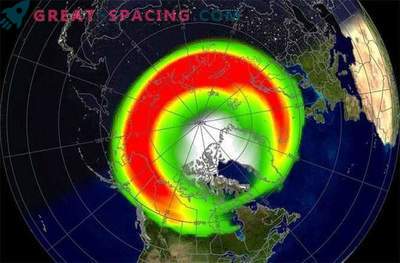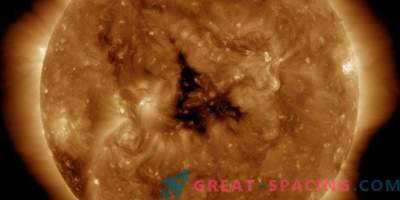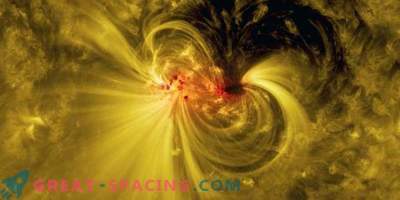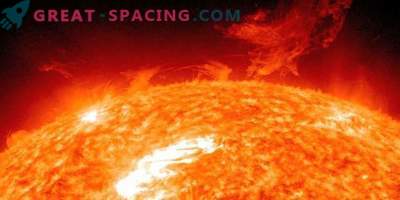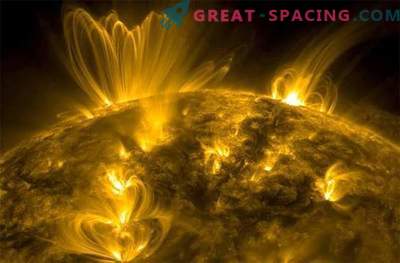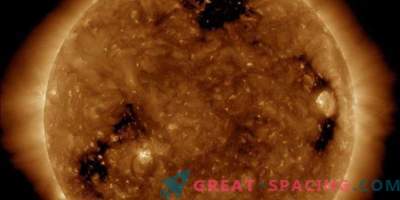
While all over the world are preparing to observe a partial solar eclipse, today, at a distance of almost 100 million kilometers from the sun, a solar storm is brewing.
While amateur astronomers are struck by a huge spot facing the face of the Earth, solar observatories are closely monitoring this region.
A dark spot in the solar photosphere, also known as a sunspot, is an intense solar magnetism erupting from the depths of the sun. This particularly active area, designated as AR2192, lumbering with active fire flashes, has recently exploded in Class 2 flashes, with the result that some short-term high-frequency radio waves travel in all directions.
Such solar flares can generate intense extreme ultraviolet and x-ray radiation, causing an ionization effect in the upper atmosphere of the Earth - a region known as the ionosphere. Radio stations operating on high-frequency radio waves can be paralyzed by such flashes, which in turn can affect air movement.
Currently, the sunspot AR2192 has increased to a size of more than 80,000 miles, so that a whole Jupiter could fit inside such a spot.
Being an exciting spectacle for astronomers, especially since the flash coincides with today's partial solar eclipse, weather forecasters are trying to assess whether this active area can explode with more powerful solar flares.
Since the beginning of this week, the AR2192 has spawned 27 C-class flashes, 8 M-class flashes, and 2 X-class flashes. More recently, on October 22, an outbreak of Class X1.6 erupted, creating an incredibly bright eruption in the solar lower corona (solar atmosphere), which was recorded by the NASA Solar Dynamics Observatory (SDO):
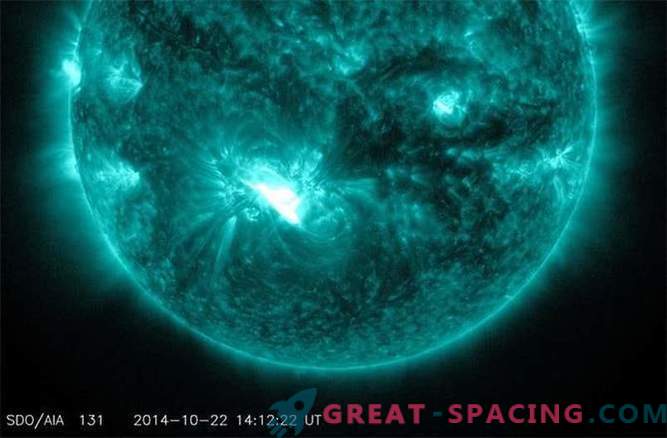
A flare of class X1.6 bursts out of the lower half of the sun. In this image, taken by NASA's SDO Observatory, it looks like a bright flash of light. This image shows extreme ultraviolet light with a wavelength of 131 angstroms, which emphasizes the high temperature of a solar flare.
According to Spaceweather.com, there is a 95 percent chance of an M-class outbreak and a 55 percent chance of a new x-ray outbreak over the next 24 hours. Since AR2192 began to shift towards the Earth, it has not caused any coronal mass ejections towards the Earth.
Solar flares and coronal mass ejections are associated with magnetic solar phenomena. Flashes are generated when huge magnetic lines of a field are pulled out from the depths of the Sun. The heated solar plasma wraps around these huge loops, known as coronal loops, causing them to shine in extreme ultraviolet wavelengths. However, a combination of certain circumstances can cause a phenomenon known as a remix. Repeated ejection of magnetic field lines slams the plasma into a trap inside the coronal loops, quickly accelerating. It is this acceleration that generates a tremendous amount of energy, exploding ultraviolet and x-rays into space in the form of a flash.
Coronal mass ejections can also occur when magnetic bubbles in the lower corona, containing the solar plasma, expand and are released into space. Although it takes from several hours to several days for coronal mass ejections to reach the Earth, a huge amount of solar energy particles (mainly protons) can dramatically increase the radiation of the medium around the Earth and interact with our planet’s magnetosphere. These geomagnetic storms cause beautiful auroras and can cause power outages on land and orbiting satellites. Although the cause of solar flares and coronal mass ejections is magnetic eruptions, they are not necessarily generated at the same time. Outbreaks can occur without generating coronal mass emissions and vice versa.
As for AR2192, we have yet to see whether it will generate a large outbreak or coronal mass ejections on Earth.
Interestingly, this month marks the eleventh anniversary of the Halloween sunstorm. In 2003, from October to November, a series of flares and coronal mass ejections hit the Earth, generating a huge aurora and causing damage to satellites. The planes were not advised to fly through the polar regions (due to a high-altitude burst of radiation and possible disconnection), and the astronauts and cosmonauts at the International Space Station had to take refuge inside a well-shielded part of the orbital outpost. A part of Sweden even experienced short power outages due to overloads of the national grid.

